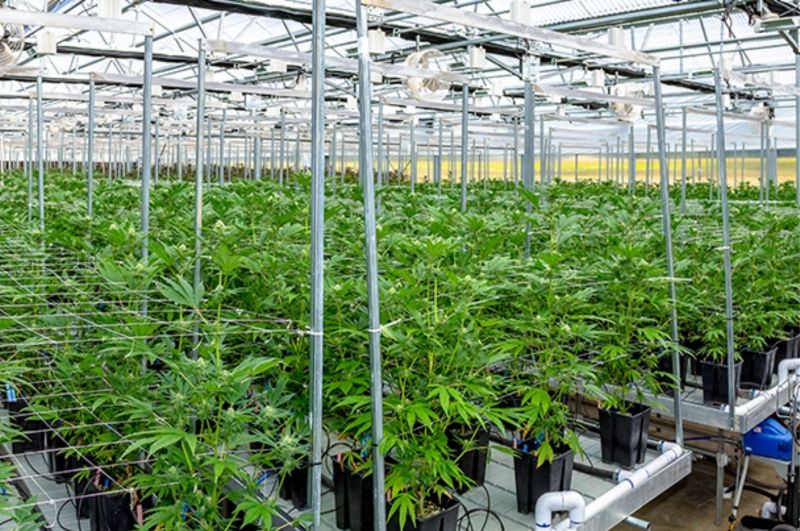
20/04/2022 While expertise in the cultivation practices of cannabis takes time, every grower should be aware of basic concepts and best practices. Let's take a look.
Cannabis production is currently one of the world's fastest-growing industries. Medical marijuana paved the way, and recreational marijuana licenses followed shortly after. Colorado was the first state to legalize marijuana for recreational use in 2012. Canada is the world's largest exporter of legal cannabis. Europe is following suit, with plans to legalize medicinal cannabis in several countries. With the legalization wave gaining momentum, more and more producers are motivated to dive in.
In this growing market, cannabis consumers can be demanding and fickle. Wholesalers appear to want it all: they want what they want, when and how, in a variety of strains, and with consistency and quality. Cultivators are frequently juggling many strains at different stages of growth, each exposed to varied growing circumstances- soil, temperature, light, and nutrients.
Different circumstances and techniques must be addressed for each crop to improve quality and productivity. Marijuana is no exception. Maintaining high CO2 levels, around 1,500 parts per million, is critical for growing bud size and density. It is essential to protect plants against animals, pests, and illnesses.
Another factor to consider is the temperature. While the sun's rays benefit marijuana, the heat can hinder growth as the plant expends energy to stay cool. UV light is equally harmful to plants. Dehydration and sunlight are always in a precarious balance. Despite the fact that marijuana is a heat-tolerant plant, optimal growth conditions assist increase yields and producing fluffier, higher-quality buds.
Temperatures of 24-30°C (75-86°F) during the day and 18-22°C (64-72°F) at night are required for cannabis cultivation. Growth rates will suffer significantly if the day/night temperature difference is too large or if night temperatures are too low.
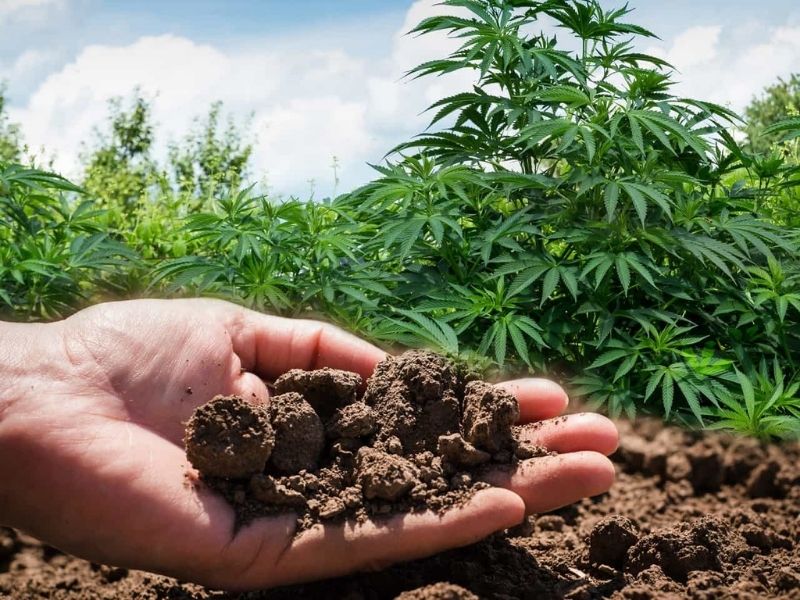
Image Source: Green rush daily
You'll have to make sure the soil conditions are ideal whether growing your cannabis in the ground or in containers. The type of soil you use will also be determined by the strain you use. Photoperiod cannabis typically requires soil that has been built up over several seasons utilizing cuttings from a single strain. Autoflowering cannabis, on the other hand, requires far fewer nutrients and is thus best grown in light, unfertilized soil. In either case, developing your soil recipe isn't necessary to grow high-quality cannabis. Store-bought soil usually provides the correct quantity of nutrients for your plants, and you can always tweak it if necessary.
What is cannabis cultivation?
The practice and procedures for growing cannabis plants are referred to as cannabis cultivation. However, techniques might differ even among specialists, making it difficult to pinpoint a single, tried-and-true strategy.
Marijuana growers benefit significantly from growing marijuana in greenhouses. The greenhouse allows for longer growing seasons and requires less infrastructure than indoor operations. Marijuana plants can be managed into early flowering and increased yields by setting conditions of 12 hours of light and 12 of darkness. This method is best carried out in a greenhouse with a darkening system.
Automation is another advantage. Thanks to today's various agricultural technologies, lighting, watering, and ventilation systems in greenhouses are reasonably simple to set up. Marijuana can grow with little to no help from the grower if it gets enough light and water.
Growers can commercially cultivate cannabis in three ways: hydroponically, organically, or as a hybrid of the two.
Cultivation through Hydroponics
Hydroponics is a plant-growing process that does not use soil and instead relies on nutrient solutions in a water solvent. To substitute soil, liquid nutrients are directly supplied to growing media like coco coir (coconut husk fibers), clay pebbles, or another lightweight, expandable aggregate. Because the open-root structure allows for direct uptake of nutrients and oxygen, hydroponic cannabis gardens are said to be more efficient than typical soil-based crops.
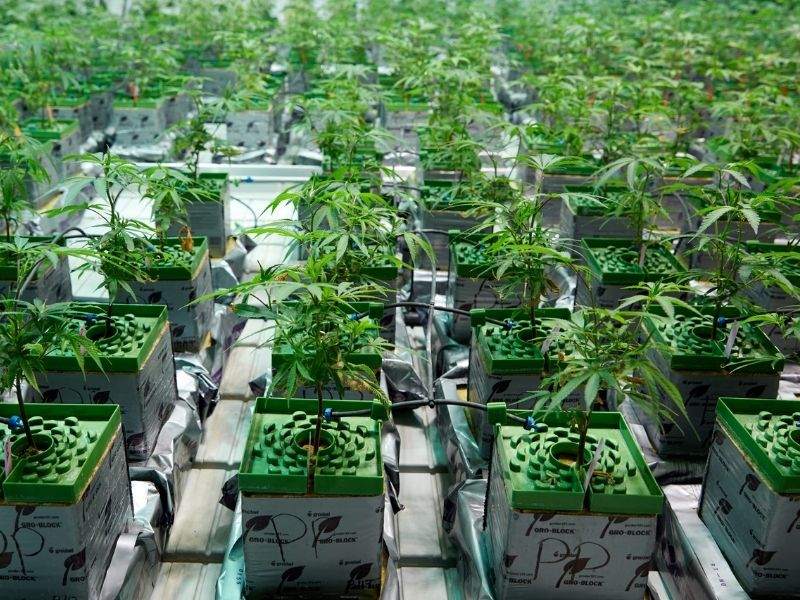
Image Source: Weed maps, Hydroponic weed
Hydroponics also allows the grower complete control over nutrient management because the fertilizer solution is blended with water-soluble mineral salts. Growers can precisely control how much of each nutrient the plant receives down to the part per million.
In hydroponics, a sponge-like substrate holds water and nutrients and gently releases them to the plant as needed. As the plant anchors the weight of its blossoms, it also creates a structure for the roots to grasp onto. Peat moss, vermiculite, rock wool, perlite, and expanded clay pellets are common hydroponic substrates. These are sometimes blended, although they can also be used independently.
Setting up a hydroponics grow house can be done in a variety of ways. In some cases, the plants are placed in static containers with the nutritional solution, while in others, nutrients are continuously delivered to the roots. In either case, because the plants have consistent access to the nutrients they require, this strategy often leads to increased productivity.
Aeroponics, like hydroponics, involves providing plants with a steady flow of nutrients without the use of soil. On the other hand, Aeroponic cultivation necessitates suspending the plants with their roots dangling downward. After that, nutrients are delivered to their roots via mist or aerosol. Aeroponics has several advantages, the most important of which is better aeration for the plants.
Organic Cultivation of Cannabis
Organic cannabis cultivation entails cultivating the herb in the manner intended by nature. Landraces, or native cannabis strains, thrive in the wild worldwide. This demonstrates that all required to support the establishment of healthy plants is high-quality soil and biodiversity.
Composts made from soil, plants, or dung are used in organic farming. Living bacteria in organic soils progressively break down soil components and deliver nutrients to plants. Although there is no scientific evidence, anecdotal data suggests that organically cultivated cannabis has a higher terpene profile than hydroponically grown cannabis, implying that organic cannabis smells and tastes better. As a result, organically grown cannabis flowers can fetch higher retail pricing.
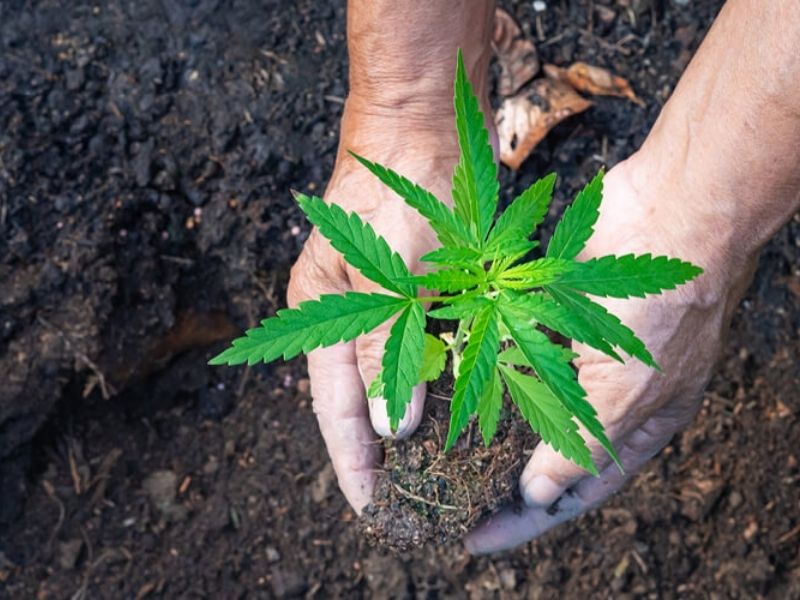
Image Source: Maximum yield, Growing cannabis organically
Organic cannabis farming is similar to alchemy in that it entails transforming low-value or waste items into high-value resources. Organic cannabis cultivation yields excellent yields and benefits the gardens and the environment.
Hybrid Cultivation of Cannabis
A hybrid cultivation strategy is prevalent in outdoor or greenhouse facilities with the purpose of mass output at a low cost. Hybrids are a man-made attempt to tailor plants to certain traits seen in ruderalis, Sativa, and Indica strains. Successful hybrids inherit their parents' best features. Plants are grown on beds of organically adjusted soil, yet they are provided water-soluble hydroponic nutrients. The crop benefits from the soil's health, and the grower has more control over the plant's nutrient requirements.
The optimum cannabis production method for your company should find a balance between intricacy and profit. Grow hydroponically indoors or in a greenhouse if you're selling full flowers to a dispensary. Take a hybrid method outside if you're growing in huge quantities for biomass extraction. Try your hand at organics if you're cultivating for the purpose of producing quality live flower concentrates.
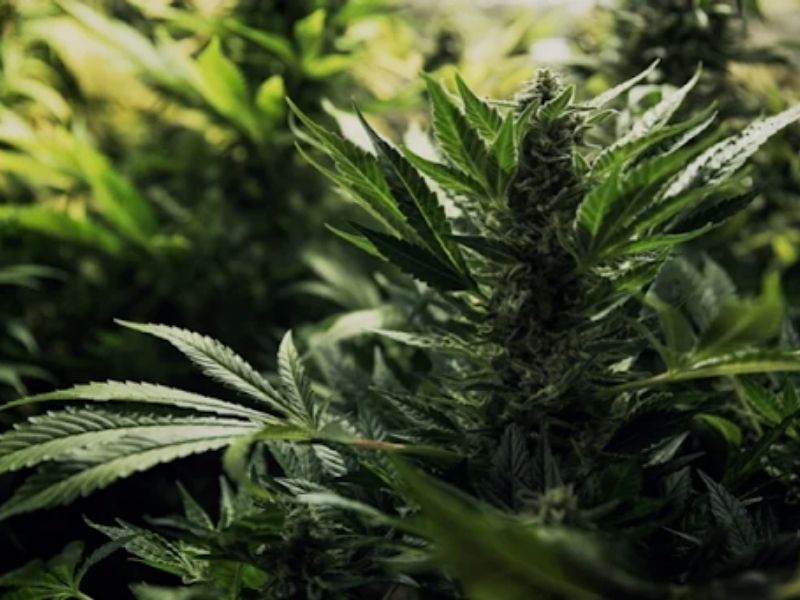
Image Source: Royal Queen Seeds, Hybrid Cannabis Strain
The threat of soil-borne diseases in the growth beds is the most serious downside of hybrid farming. Mold spores can conceal and remain latent in the soil for months, making it difficult to control destructive insects. Chemical methods for fumigating a soil bed exist, although they are generally restricted in the cultivation of medicinal cannabis.
The legalization of Cannabis has removed the need to conceal its cultivation, allowing growers to take advantage of large-scale production. Despite its shady reputation, growers, scientists, and other supporters argue that allowing the cannabis business to flourish will promote social and economic development while improving the quality of life.
Article By Aakriti Rawat, Beverage Trade Network
Header Image Source: Cannabis science and technology
TAGS:






